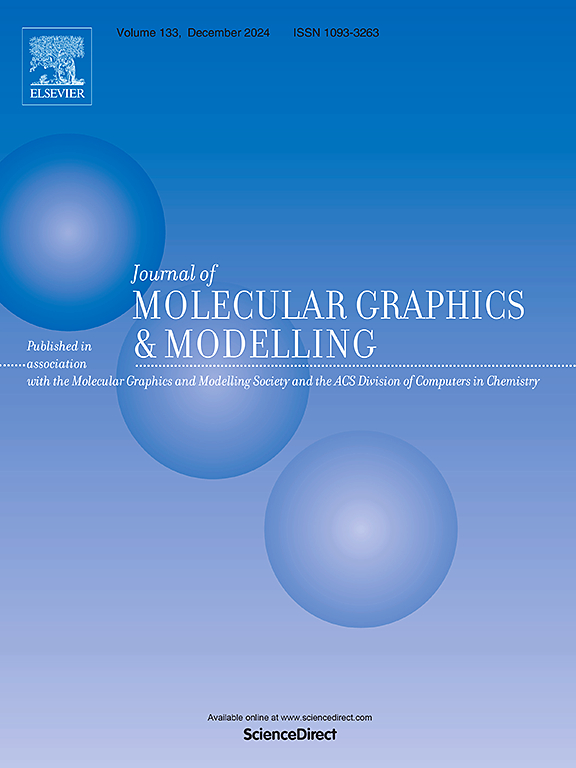比较GPR101受体的模型和实验结构:人工智能产生高度精确的模型
IF 3
4区 生物学
Q2 BIOCHEMICAL RESEARCH METHODS
引用次数: 0
摘要
GPR101是一种G蛋白偶联受体(GPCR),与遗传条件x -连锁肢巨体症(X-LAG)有关,最近通过冷冻电子显微镜解决了GPR101的实验结构。在这里,我们将这些实验结构与我们之前发表的计算模型进行了比较,包括我们内部开发的同源模型和通过AlphaFold2和alphafold -多状态人工智能(AI)方法生成的第三方模型。我们的分析显示,同源模型和人工智能生成的模型都具有相当高的准确性。然而,它也揭示了人工智能方法的普遍优势。特别值得注意的是AlphaFold2生成的模型,它以高保真度捕获了各种结构方面,包括具有挑战性的第二个细胞外环。我们之前发表的基于β2-肾上腺素能受体的GPR101-Gs蛋白复合物的同源性模型,准确地预测了G蛋白与受体的结合模式。此外,该模型对第六跨膜结构域(TM6)的预测精度明显高于其他模型,包括通过人工智能方法构建的模型,这表明基于与感兴趣的G蛋白在复合体中求解的模板的同源建模可能是该跨膜结构域建模最可靠的方法。最后,我们的分析表明,我们的分子动力学模拟对模型的准确性没有显著和一致的影响,在某些领域提高了精度,而在其他领域降低了精度。这项工作为我们对GPR101的案例研究提供了对不同建模方法相对优势的见解。更广泛地说,当与其他评估研究一起考虑时,它有助于不断增长的知识体系,可以指导尚未获得实验结构的gpcr建模。本文章由计算机程序翻译,如有差异,请以英文原文为准。

Comparing models and experimental structures of the GPR101 receptor: Artificial intelligence yields highly accurate models
Experimental structures solved through cryo-electron microscopy have recently been published for GPR101, a G protein-coupled receptor (GPCR) implicated in the genetic condition X-linked acrogigantism (X-LAG). Here, we compared these experimental structures with computational models that we previously published, including our internally developed homology models and third-party models generated through the AlphaFold2 and AlphaFold-Multistate artificial intelligence (AI) methods. Our analysis revealed considerable accuracy for both homology models and AI-generated models. However, it also revealed the general superiority of AI methods. Particularly noteworthy is the model generated by AlphaFold2, which captured with high fidelity various structural aspects, including the challenging second extracellular loop. Our previously published homology model of the GPR101-Gs protein complex, based on the β2-adrenergic receptor, accurately predicted the binding mode of the G protein to the receptor. Moreover, this model predicted the structure of the sixth transmembrane domain (TM6) significantly more accurately than the others, including those built through AI methods, suggesting that homology modeling based on templates solved in complex with the G protein of interest might be the most reliable way of modeling this transmembrane domain. Lastly, our analysis revealed that our molecular dynamics simulations did not have a significant and consistent effect on the accuracy of the models, increasing the accuracy for some domains while decreasing it for others. This work provides insights into the relative strengths of different modeling approaches for our case study on GPR101. More broadly, when considered alongside other assessment studies, it contributes to the growing body of knowledge that can guide the modeling of GPCRs for which experimental structures are not yet available.
求助全文
通过发布文献求助,成功后即可免费获取论文全文。
去求助
来源期刊

Journal of molecular graphics & modelling
生物-计算机:跨学科应用
CiteScore
5.50
自引率
6.90%
发文量
216
审稿时长
35 days
期刊介绍:
The Journal of Molecular Graphics and Modelling is devoted to the publication of papers on the uses of computers in theoretical investigations of molecular structure, function, interaction, and design. The scope of the journal includes all aspects of molecular modeling and computational chemistry, including, for instance, the study of molecular shape and properties, molecular simulations, protein and polymer engineering, drug design, materials design, structure-activity and structure-property relationships, database mining, and compound library design.
As a primary research journal, JMGM seeks to bring new knowledge to the attention of our readers. As such, submissions to the journal need to not only report results, but must draw conclusions and explore implications of the work presented. Authors are strongly encouraged to bear this in mind when preparing manuscripts. Routine applications of standard modelling approaches, providing only very limited new scientific insight, will not meet our criteria for publication. Reproducibility of reported calculations is an important issue. Wherever possible, we urge authors to enhance their papers with Supplementary Data, for example, in QSAR studies machine-readable versions of molecular datasets or in the development of new force-field parameters versions of the topology and force field parameter files. Routine applications of existing methods that do not lead to genuinely new insight will not be considered.
 求助内容:
求助内容: 应助结果提醒方式:
应助结果提醒方式:


